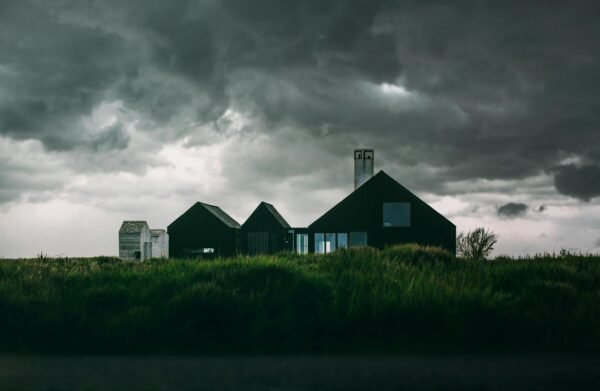
Could Podcasting Help Your Career?

All businesses need to think about marketing. Most businesses will have tried the classics: leaflets, Facebook ads, Social Media, etc. But at their core, these forms of marketing require some form of advertising copy. That’s not a skill everyone has. But most people who have a skill can talk about their expertise. Wouldn’t it be great if there was a marketing tool that could tap into that knowledge and natural passion?
Welcome to the world of podcasts.
Audiences and content
In the UK alone, over 21 million people regularly listen to podcasts, and podcasting can be a great way of demonstrating a person’s knowledge and positioning them as an expert. Even a short series can attract hundreds of thousands of listeners.
We worked with Mining Journal. Despite their niche and down-to-earth subject matter, in just 10 episodes their podcast reached over 200,000 listeners – enough people to fill Wembley stadium twice plus the O2. And that’s not 200,000 half glances at a leaflet, that’s 200,000 people choosing to pay attention to what’s being said.
However, there’s more to podcasting than just knowing your stuff.
Successful podcasting involves navigating a learning curve. Content needs to be interesting and engaging, and technology and production skills need to be at a sufficiently high level. And that’s just for audio. While podcasts started as primarily audio content, many now combine audio and video content.
There are challenges, but there are also stadiums worth of listeners to be reached.
Podcasts are popular
The main reason to consider starting a podcast for your business is simply that people like listening to them. They are also borderless since you can publish to Spotify or Apple Music, for example, and reach a global audience.
The challenge is in how to cut through the noise. While it is hard to pin down a specific number, there are estimated to be between three and five million podcasts worldwide. Getting noticed by your target audience can, therefore, be tricky.
One way of getting noticed is to demonstrate your commitment. By releasing between three and five episodes in one go, you are much more likely to become featured in the ‘New and Interesting’ section on Spotify and Apple Music.
Podcasts are interactive and engaging
Of all forms of content, podcasts are one of the most interactive. You can podcast about anything, whether it’s incredibly niche or fairly broad and generic, and there will be people interested in listening and learning more.
What’s more, people will have opinions, meaning you can get real interactions with your listeners. Interaction tends to happen in one of three ways: asynchronous interaction via comments, instant interaction via livestream commenting, or real-time interaction via call-ins.
Find ways to include interaction within your podcast and you’ll create a lot of audience engagement. Comments can also be very useful when coming up with new content ideas, or you could include a Q&A segment within your regular podcast.
Podcasts are multi-format
One of the best business cases for podcasts is that the content can be easily chopped into a multitude of different formats for different channels. A long-form podcast can be chunked into clips for social media and YouTube, segments for marketing and advertising, and even turned into blog posts.
Among all content types, podcasts are perhaps the most multi-purpose, making them one of the most cost-effective as well. A single 30-minute episode could produce a hundred pieces of content in the form of social clips, soundbites, and blogs.
Getting content that can be chunked down into pleasing soundbites is, however, harder than you might imagine. It’s all down to your pre-production ─ it takes a lot of planning to find the ideal structure for the episode. You also need a good host who knows how to summarise things neatly, when to pause and when to move things along.
A few tips
If you are featuring a guest, let them know the questions in advance so that they can prepare useful and concise answers that are far richer in information. It’s always hard to think of everything at the moment. It is then the job of the host to make the questions seem natural and organic despite the preparation.
If you are setting up cameras to record video content at the same time, it’s always best to have a few different angles set up. Then, when it comes to editing, you can simply switch between angles to make the cuts appear seamless.
A final tip to help with editing is to have someone off camera making note of the times when particularly interesting things were said. This makes the editor’s job a lot easier and means you know how to market the episode before the final edit is complete.
Podcasts can be an amazing marketing tool for businesses. They do, however, take a lot of planning to get right. Between content, production, marketing, guests, hosting and editing, there are lots of pieces that need to align.
These tips should help you get started. However, it’s always useful to have at least one person on your team who is experienced in producing podcasts, or alternatively, use an agency that can get these things right the first time.
Production quality really does matter ─ not only does it keep your audience engaged but it ensures that the content can be used for a multitude of channels, giving you the best value for money.
ABOUT THE AUTHOR:

Michael Olatunji is co-founder of Outset Studio, a full-service podcast and video production studio in London. Outset specialises in pod- and vlog- casts, live streams and live shopping. The team works collaboratively with the client to make high-quality content that attracts an audience and increases engagement. Recording can be done at their studios in London or on location. Whether a client simply wants studio space or would prefer someone to manage the full production, Outset’s experienced teams have it covered. Web: www.outsetstudio.com














































